 |
 |
Mammals and birdsphotos of sea mammals and birdswww.seafriends.org.nz/images/mammal.htm For seals see the seals page. Also see another dolphins page. All A5@300dpi quality unless indicated otherwise.
|
| Keywords: NZ, New Zealand, hector, dolphin, hectors, cephalorhynchus hectori, sea, threatened, underwater, nature, |
 |
 |
 |
 |
 f026526: this photo shows a number of young hoons chasing one another in their never ending games. |
 |
| The bottlenose dolphin (Tursiops truncatus) is New Zealand's most common
dolphin as it is found along all coasts while migrating far afield in the
Pacific Ocean. It is a large dolphin, reaching some 3.5 metres in length.
Living in relatively small pods of 5-40 animals, this dolphin is often
encountered racing ships and playing in their bow waves.
Recently its numbers appear to be declining and the number of calves in each pod too. In certain years many dead calves are found washed up on beaches but it is not precisely known why. |
| Keywords: NZ, New Zealand, hector, dolphin, hectors, cephalorhynchus, hectori, sea, threatened, underwater, nature, |
 |
 |
 |
 |
 |
 |
 |
 |
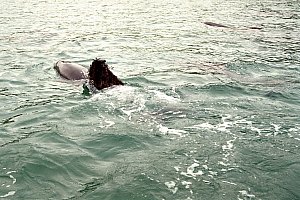 |
 |
| The little blue penguin (Eudyptula minor) lives far away from
Antarctica and is found along all New Zealand's shores, although it is
more common along the South Island. The white-flippered penguin is a subspecies
(Eudyptula
albosignata) and is less blue on its back while having distinctly white
bottomed flippers.
These animals spend most of their time in the sea, fishing for small shrimps and fish. By night they return to the shore to dry, walking long distances uphill to their secretive burrows. The animals suffer a hard life and mortality is high, particularly among the young. |
| Keywords: NZ, New Zealand, penguin, white-flippered, white, blue, little, fairy, sea, bird, seabird, Eudyptula minor, Eudyptula albosignata, threatened, pollution, |
 |
 |
 |
 |
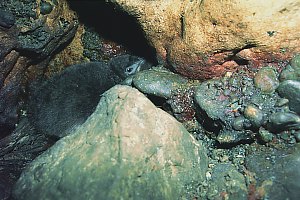 |
 |
 |
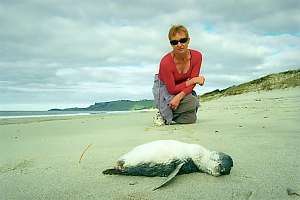 |
 f015323: on right it shows its white flipper which identifies it as a white flippered penguin (Eudyptula albosignata) |
 |
 |
 |
 |
 |
 f026611: Left: in the dim light of dusk, a blue penguin has returned from the sea, drying itself before clambering up the cliff, often for hundreds of metres to its burrow. |
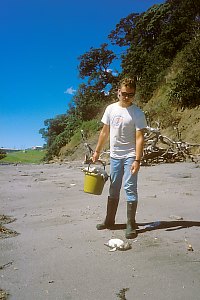 |
 peng04: during some mass mortalities, dead penguins are swept into particular beaches where they can be picked up in scores. |
 |

f026819: in places, blue penguins seek the shelter of human dwellings as this one has found here in the drain of a garden wall. |
| The yellow-eyed penguin (Megadyptes antipodes) is much less numerous than the blue penguin. It is not found on the North Island of New Zealand. It is a very strong swimmer, capable of jumping clear out of the water, resembling a small dolphin. It does not make a burrow but maintains a lair underneath thick coastal shrubbery where its young and eggs are easily preyed upon by cats, rats and stoats. |
| Keywords: NZ, New Zealand, penguin, yellow-eyed, yellow, megadyptes, antipodes, threatened, pollution, |
 |
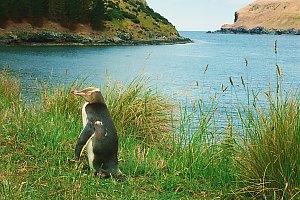 |
 |
 |
 |

f026831[A6]: avid bird watchers have walked the long track to the hide specially built for watching penguins land at dusk. In the distance the slanting track taken by many birds, but some walk right past this hut. |
-- Seafriends home -- photo
stock library -- UW photography
-- Seafriends site map -- Rev 20060808,20070730,